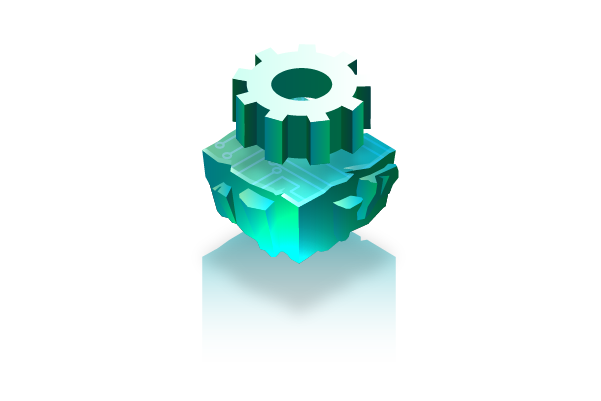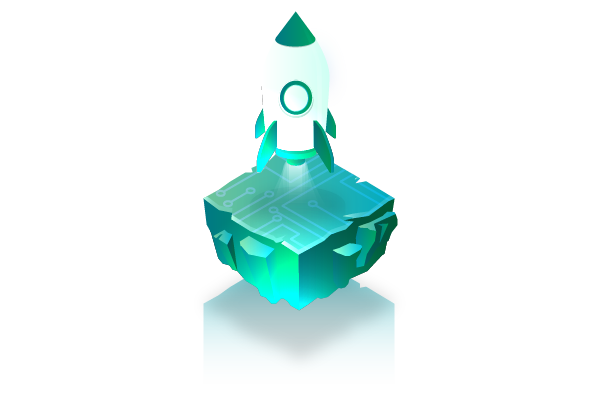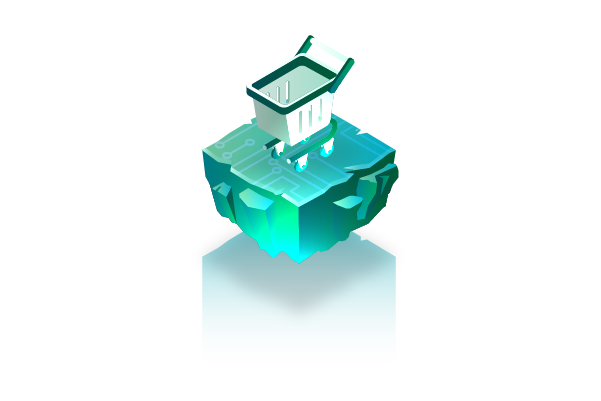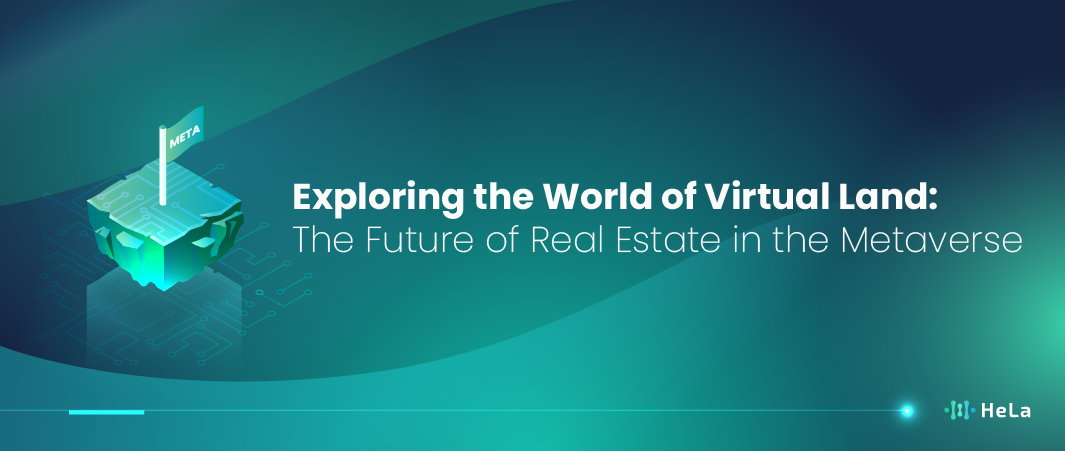Virtual land or digital real estate is an intriguing and still emerging subject in the context of VR and the metaverse. Altogether, virtual land is akin to owning real estate but is exclusive to the digital realm. These digital parcels enable individuals, businesses, and organizations to stake their own claim and build and profit from spaces within different virtual worlds. Virtual land varies from small parcels to large expanses of land that can be bought and developed to suit specific needs.
In the recent past, virtual land has been received well in the market primarily due to the advancement in virtual reality and other online communities. Some of the platforms where people can buy, rent, or gain part of the land include Decentraland, The Sandbox, and Cryptovoxels. With the general development of technology and increasing popular demand for virtual environments, virtual land ownership is likely to become a new trend in the emerging economy. It not only contributes to the development of metaverse but at the same time creates new opportunities for social interaction, consumption, entertainment and even pioneering in terms of new horizons. Comprehending the online property market and interaction within it is perhaps a vital factor that will allow us to function in a progressively computerized environment.
What is Virtual Land?

Virtual land is a digital asset representing plots of land within virtual worlds or metaverses, which are computer-generated environments accessible via the internet. These digital realms are often built on blockchain technology, which ensures secure and transparent ownership. Virtual land can be bought, sold, and traded just like physical real estate, with each parcel of land being unique and represented by a non-fungible token (NFT).
Owners of virtual land can use their property for a variety of purposes, including building virtual homes, businesses, and other structures, hosting events, creating games, or even displaying digital art. The value of virtual land is influenced by factors similar to those in the real world, such as location, size, and the potential for development or commercial use. High-demand areas within these virtual environments, such as spaces close to popular attractions or areas with high foot traffic, can command significant prices.
Additionally, virtual land offers a unique opportunity for social interaction, commerce, and entertainment, creating new avenues for investment and business in the digital age. As technology advances and more people engage with these immersive virtual spaces, the significance and value of virtual land are expected to grow, making it an intriguing aspect of the evolving digital economy.
How Virtual Land Works?
Virtual land, an important part of the still developing metaverse and other CЕ virtual worlds, works like actual land but they are virtual. Today, with the help of cryptography, people can buy, sell, and create plots of virtual land through the use of digital currencies on decentralized platforms like Decentraland, The Sandbox, and Cryptovoxels. These parcels are usually established based on non-fungible tokens (NFTs) that maintain ownership details that cannot be altered, thus ensuring the distinctiveness of each piece of land. Like in the previous examples, this system relies on the principle of decentralized blockchain, which does not allow for fraud and defines property rights in the virtual world.
Similar to actual land, the value of virtual or digital land depends on several factors that have been postulated as follows. Those that are highly exposed, either through virtual foot traffic or closeness to market hubs and attractions have a higher value. Thus, the market price is also influenced by a number of factors related to the utility of the land including the possibility of holding events, virtual commerce as well as advertising. The increasing size of the metaverse also translates to an increase in demand for these choice locations and their unusual rates of fluctuation, which can make them prime candidates for flipping.
Another factor that has been considered as very attractive for many of the users is the ability to monetize virtual land. Actually, these digital plots can create revenues through numerous activities. For instance, virtual landowners can lease their property to host events, establish virtual stores to sell access to virtual merchandise, or advertise products and services. Special shows, tours, or performances (concerts, galleries, or parks) can successfully draw the audience and produce income. These led actual economic activities within the metaverse as well as giving a new approach to the business-like venture in the digital world.
Moreover, we cannot ignore the social aspect of virtual land as well. These are places where people normally convene for social, educational and recreation activities from their neighborhoods. They mediate social relations and cooperation bringing together people and organizations beyond physical vicinity thereby creating new forms of global interconnection. Due to the convergence of the social media experience, gaming, and virtual reality, the metaverse is a highly interactive environment where consumers may participate in various activities.
Current Trends in Virtual Land
Today’s trends in virtual land are highly associated with the rising popularity of the metaverse concept, blockchain technology, and non-fungible tokens, also known as NFTs. Right now, virtual real estate within metaverse platforms such as Decentraland, The Sandbox, and Cryptovoxels is becoming a highly sought after commodity as more and more users and brands buy into the idea of owning virtual space. These platforms provide the option to purchase, sell, and create virtual territories primarily based on the use of cryptocurrencies. This is due to increasing demand for virtual and augmented reality, social presence, and electronic commerce.
Large corporations and celebrities are also getting involved, holding concerts and fashion shows and building branded virtual spaces. For example, fashion labels are creating virtual stores, singers are giving virtual concerts, and painters and artists are displaying digital art galleries. These factors are making virtual land a place for various entertainments, purchases and social activities, thus improving its prospects and relevance.
Also Read: 7 Best Crypto Friendly Banks Worldwide in 2024
Also, virtual land is increasingly viewed as a potential investment object; the price for the best plots in virtual worlds is soaring. These investors are buying land in the metaverse, with the expectation of its value rising as more people and organizations enter the space. This speculation is further compounded by the fact that virtual land available in each of these platforms is scarce, like actual real estate.
That is why technological progress is also making an essential contribution to the formation of virtual land. Advancements in virtual reality (VR) and augmented reality (AR) mean that these digital worlds are becoming more realistic and available to all. Improved graphics, intuitive input methods, and cross-platform compatibility are creating a smooth and enjoyable user experience in virtual environments.
Moreover, the application of decentralized finance (DeFi) into these platforms is creating new possibilities for owners of virtual land. In this case, the user can use his plots to earn profits, vote on decisions concerning the metaverse, and avail services such as financing. This combination of virtual ownership and monetary freedom is appealing to a wide spectrum of individuals from personal computer geeks to conventional fund managers.
With the development of technology and the growth of the number of users in social networks, virtual land will become one of the key elements of the future of social networking services, games, and other communities. It is on the verge of turning into one of the key components of the digital economy where people will be able to communicate, buy things and work in completely simulated worlds. The continuous positive changes in this area indicate that virtual land is real and has become the new face of the future virtual networks.
The Future of Virtual Land

The future of virtual land remains very promising given that virtual land is underpinned by blockchain technology, virtual reality, and the metaverse. Virtual land is being traded and built across platforms Decentraland, the sandbox and more and mostly using cryptocurrencies. This is because users can build and profit from virtual experiences, organize events, and develop virtual shops within this digital property.
The integration of virtual reality makes such spaces even more effective, as it increases the level of interactivity of these territories. The Virtual World enables users to traverse immense digital terrains, socialize with other avatars, and engage in various activities without stepping outside their homes. This opens up new possibilities of communication, leisure, learning, and business, blurring the distinction between the real and the cyber space. Also, virtual reality technology provides a greater level of freedom and flexibility when it comes to the design and layout of virtual spaces where landowners can create bespoke environments that meet their requirements and preferences.
In addition, blockchain enhances the ownership and transfer of virtual land while reducing the occurrence of fake or fraudulent sales. These exchanges are managed by smart contracts which are trustless and automated and do not require intervention from third parties. This decentralization ensures that the user is fully in charge of his/her virtual asset and can confirm that his/her investment is safe and can be proven.
However, looking at the social aspect of owning virtual land is something that can be taken a notch higher. In a way, it liberalizes the investment in real estate by creating chances for individuals who may not afford to venture in real estate property investments. It could herald in a new form of shared land ownership that facilitated the formation of more diverse and inclusive virtual communities for people to live and work together.
How to Buy Virtual Land? A Step By Step Guidelines

The Virtual Land enables users to traverse immense digital terrains, socialize with other avatars, and engage in various activities without stepping outside their homes. However, how to buy one? We will send the guidelines below.
1. Open a Digital Wallet
The first thing you need to do is to acquire a digital crypto wallet. You cannot use fiat money to purchase virtual land, so you will first have to acquire a wallet where you can buy and store your cryptocurrency. The wallet you select should be able to connect into your browser.
There are various but some of the most popular ones include MetaMask or the Trust Wallet. You can also use the Coinbase Wallet if you have a preference for it. Though it is advisable to look at what the wallet supports before choosing the cryptocurrency you will use to purchase virtual land.
2. Choose Your Real Estate Platform
Choosing your real estate site when investing in virtual land is crucial for benefiting from the new possibilities of digital real estate. Virtual land can be defined as digital real estate that has the ability to be bought, sold, and developed in virtual space often using cryptocurrencies due to the increased security that they offer due to the use of blockchain technology.
When selecting a platform, identify those that provide engaging and realistic settings, easy-to-use tools, and general information on the management of virtual properties. There are several virtual land platforms that you can buy, such as Decentraland and Sandbox. These can include customizable land parcels, better visualization and interaction tools, and an active and responsive user base. This specific market can then be effectively managed by choosing the right virtual land platform where it is located.
Also Read: 12 Top Market Making Companies to Know in 2024
3. Connect Your Wallet
Your wallet acts as your entry key to secure transactions and identity confirmation on digital platforms following the blockchain concept. To invest in virtual land initially, one should check whether the digital wallet one is using is compatible with the type of cryptocurrency accepted in the virtual world. After choosing the virtual land you want, go through the buying process and click on connections and follow the procedures to add your wallet.
This is usually in the form of approving the transaction as well as verifying your ownership details. Linking of your wallet guarantees the safety of your transaction and offers you ownership right over the property in the virtual world. It’s therefore important to check the legitimacy of the platform and confirm the transaction details to create a seamless and safe buying journey within the budding niche of buying virtual land.
4. Confirm Your Purchase
Paying for the virtual land is the last phase of buying virtual land and it makes sure that the transaction is safe, and your rights over the property are well protected in the virtual world. Explore the parcel of virtual land you want to purchase, connect your wallet, then check the location, size, and price of the plot. After that is done, go ahead and make the payment through the interface of the platform, often via a button or by completing certain steps.
It is crucial to pay attention to each transaction parameter, such as the exact amount of cryptocurrency and fees. On confirmation, the platform will allow the transaction to take place on the blockchain, thus offering you unassailable evidence of possession of your digital asset. Making your purchase confirms that you are now a virtual landowner and the possibilities of development, investment, and exploration are limitless in the metaverse.
Conclusion
Virtual land is a promising and rapidly growing phenomenon in the digital realm with both opportunities and risks. With the developing applications of blockchain technology, virtual land ownership is set to transform multiple industries such as gaming, real estate, and social interactions. That is why the potential for investment, creativity, and experience in it is immense, forming a new digital economy with the possibilities hitherto unseen.
Although, issues of ownership, control and sustainability have to be well answered as virtual worlds increase in significance. At the same time, as more people turn towards virtual reality and the metaverse, virtual land is on the brink of becoming an essential part of the world we will inhabit in the upcoming years, both professionally and recreationally.
Disclaimer: The information provided by HeLa in this article is intended for general informational purposes and does not reflect the company’s opinion. It is not intended as investment advice or a recommendation. Readers are strongly advised to conduct their own thorough research and consult with a qualified financial advisor before making any financial decisions.

